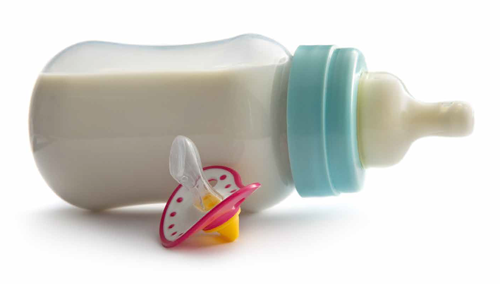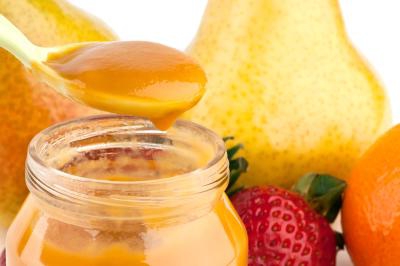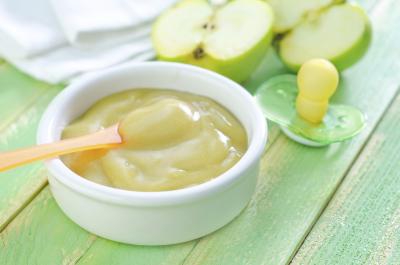Many families in which one or several babies grow up know firsthand how difficult it is sometimes to get enough dairy products in sufficient quantities. Local mothers come to the aid of young mothers, ensuring the operation of dairy kitchens in the entrusted territory. The same structures determine the list of what is provided in the dairy kitchen, the security standards and the procedure for processing documents to receive such assistance. Unfortunately, not everyone can take advantage of this benefit. To receive a “milk social package”, you have to prove that you need it.
A bit of history
Children's dairy cuisine first appeared in Russia in 1911. This was an indispensable tool for combating the high mortality of newborns, which in those years reached 40% and was associated precisely with insufficient or inadequate nutrition of babies.

In the Soviet Union, such establishments were opened throughout the country. It was there that during the times of total deficit, young mothers and fathers received cottage cheese and milk, which are so important for the full development of babies. Of course, today there are no problems with baby food, the assortment of any store will please with its variety, but the price of the issue can still become unbearable for the budget of a young family.
Therefore, in many regions of the country, free dairy cuisine is still very popular, especially among the poor. Today, such institutions are called "Milk Distribution Points" due to the fact that baby food is produced in factories equipped with special "children's" lines, and these points simply distribute them.
Who should
Since the decision on the functioning of such establishments is made by local authorities, the list of those who are entitled to dairy cuisine may vary depending on the place of residence.

In general, applicants for the use of such services may:
- babies from birth to one year in the event that they are on artificial feeding;
- breast-fed infants since the introduction of complementary foods;
- babies under 3 years of age according to general indications;
- children up to 7 years old from large families;
- children under the age of fifteen who suffer from chronic diseases;
- children under 18 years of age who are disabled;
- nursing mothers whose children have not reached six months;
- pregnant.
It is important to remember that if milk distribution points are not provided in your region, categories of the population entitled to use them may require payment of monetary compensation for the independent purchase of infant formula.
Documents
Unfortunately, in our time, even the best event cannot do without bureaucratic red tape. The issue of obtaining additional nutrition is no exception. To collect documents for dairy cuisine, you will have to run a lot. You will need:
- original and copy of civil passport;
- copy and original of birth certificate of a child;
- certificate that the child is registered at the place of residence of the parents;
- copy and original certificate of marriage (or divorce);
- newborn medical insurance policy;
- a certificate of the average income of your family over the past 3 months, indicating salaries, pensions, scholarships, unemployment benefits, alimony and other types of income;
- certificate of family composition;
- a certificate of accrual of child support (or a certificate from the court stating that the applicant did not file for child support) in the event that the child's parents are divorced;
- when one of the able-bodied family members does not work at the time of completing meals, you will have to attach a copy of the work book and documents confirming the lack of income (for example, that a person does not receive any social benefits and benefits, a stipend, and so on);
- a statement written in the name of the head doctor of the children's clinic to which the child is attached;
- application of one of the parents or guardians that the permission to receive additional food has not been issued earlier;
- an extract from the children's clinic, which confirms that the baby is transferred from breastfeeding to artificial or mixed;
- a recipe for additional free meals;
- other documents that are the basis for serving in the dairy kitchen (certificate of disability, chronic illness of the child, large families, and so on).
The list of necessary documents for those who are entitled to dairy cuisine may vary depending on the region and be much shorter (longer) presented here.
How to get food: step by step
So, let's try to determine the procedure for obtaining additional nutrition for the newborn:
- First you need to find out whether such a service is provided in the region where you live, and whether you belong to one of the categories of citizens who may qualify for it. After that, you need to find out what documents you need to collect in your particular case. Most often, detailed information and some information can be obtained from the single window service or the Committee for the Protection of Maternity and Childhood.
- After collecting the necessary documents, you should contact your local pediatrician to get directions for additional food. After examining the child and issuing the appropriate opinion, you will be assigned a special number, which is recorded in the medical record. It must be remembered or written down, it is you who you will call it every time you receive food in the dairy kitchen. The recipe will have to be written out regularly, from the 20th to the 25th day of each month.
- Find out the address of the reception point to which you are attached, study the work schedule. Most often, this information is in the registry of the children's clinic. Typically, "milk" is open from 6.00 to 12.00 days, without holidays and weekends, but still better to clarify. If you want to receive food not at the point where you are assigned (for example, you live in one district of the city, but are registered in another), then you will need to provide a statement and a certificate stating that you do not receive dairy products at the place of registration.
0 to 5 months
Of course, the norms of issuance and the list of products may vary in each region, but an approximate list of products looks like this:
From the moment of birth to two months you can receive:
- 700 g of milk powder, adapted (1 time / week.);
- 4800 g of liquid milk mixture (1 time / month).
3 to 4 months:
- the same baby food for newborns as in the previous case;
- 1 liter of fruit juice (monthly);
- 1 kg of fruit puree (monthly).

To feed a baby five months old, it is also added:
- 1 kg 900 g of vegetable puree (monthly);
- 400 g of dry instant cereal (monthly).
From 6 months to a year
For a six-month-old baby, the norm for baby food for newborns is somewhat reduced - only 350 dry mixes are supposed, and 2400 grams of liquid mix, but fruit juice is put as much as 200 grams more.
For a 7-8 month old baby, among other things, is added:
- 600 g of baby curd (1 time / week);
- 1 kg 300 g of meat and vegetable puree (monthly);
- 560 g mashed meat (1 time / month);
- the norm of juice increases to 1.4 liters, and vegetable puree - up to 1 kg 920 g per month.
A grown-up baby from 9 months to a year, in addition to all the previously listed products, is put an additional 2,000 grams of baby kefir per week.
Children of the first and second years of life
As can be seen from the previous paragraph, additional food is provided to children from low-income families quite high-calorie and varied, but for older children, children's dairy cuisine provided a more meager assortment.
So, children under two years old will receive:
- 2 liters of baby kefir (weekly);
- 600 g curd (weekly);
- 2.4 liters of milk (monthly);
- 2 liters of fruit juice (monthly);
- 800 g of fruit puree (monthly).

For babies up to three years of age, approximately the same set of products is provided, only the norms for milk and juice change places.
Pregnant and lactating mothers
There are several other categories of people who are supposed to dairy cuisine. Pregnant women who need free additional nutrition can receive 6000 g of milk and 2640 g of fortified juice every month. Nursing mothers can also count on an extra ration: for them, the norms of milk and juice are slightly increased - 8000 and 3300 grams per month, respectively. It is interesting that if your baby is breast-fed, then until she reaches six months of age, only a nursing mother has the right to receive food at a distribution point.
If a woman cannot consume milk for medical reasons (for example, she has lactose intolerance), then in some cases she may receive milk puddings or other products.
Other categories
The remaining categories of the population who are entitled to dairy cuisine, namely children from large families until they reach the age of seven, children with disabilities, as well as those with chronic diseases, can only rely on monthly milk production. The rate of receipt is 18 liters (18 000 g) per month.
Some subtleties
Attention! The right to use the dairy kitchen will have to be confirmed every three months, therefore, so that there is no big break in getting the milk, take care of the relevant certificates in advance.
If the prescription for dairy cuisine is not written for the child, but for the pregnant woman, then the doctor and the female doctor give the direction and all the necessary certificates. You can get a referral for additional milk nutrition from the twelfth week of pregnancy.
If you missed a visit to the distribution center for two days in a row, then your application is withdrawn from service. The delivery of products will be resumed no earlier than two days after the date of circulation, and products not received through your fault will not be compensated.
